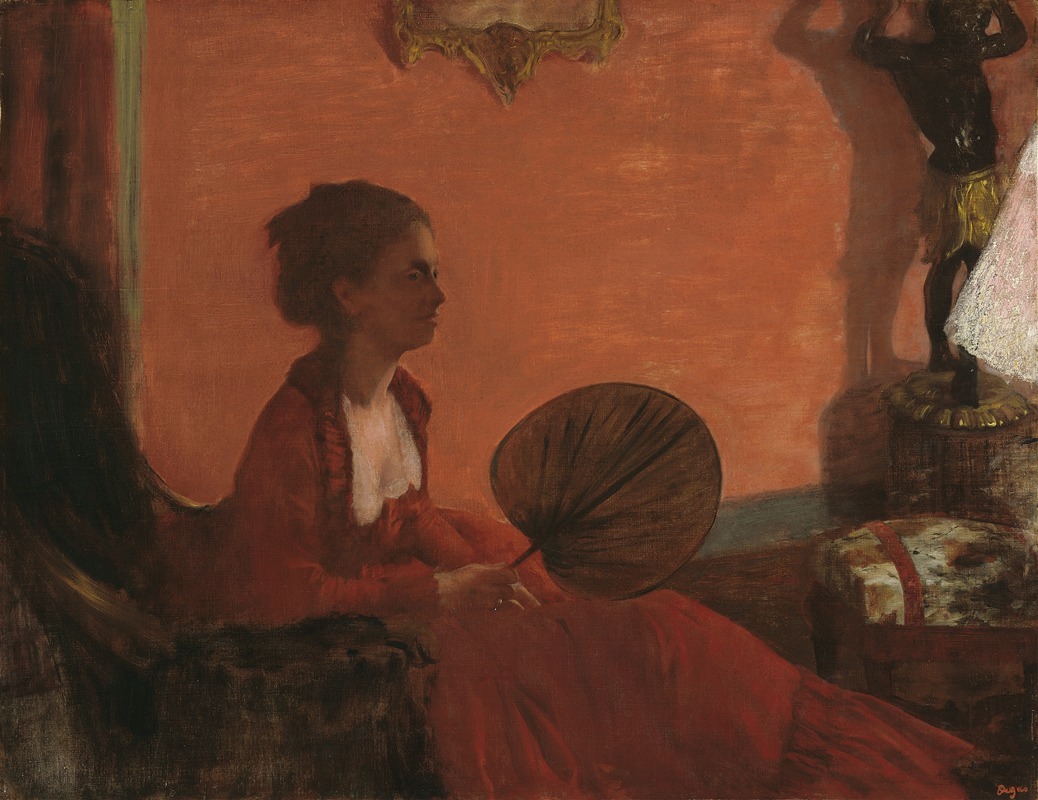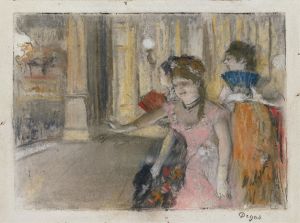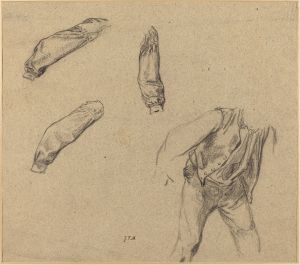
Madame Camus
A hand-painted replica of Edgar Degas’s masterpiece Madame Camus, meticulously crafted by professional artists to capture the true essence of the original. Each piece is created with museum-quality canvas and rare mineral pigments, carefully painted by experienced artists with delicate brushstrokes and rich, layered colors to perfectly recreate the texture of the original artwork. Unlike machine-printed reproductions, this hand-painted version brings the painting to life, infused with the artist’s emotions and skill in every stroke. Whether for personal collection or home decoration, it instantly elevates the artistic atmosphere of any space.
Edgar Degas, a prominent French artist known for his contributions to Impressionism, created the painting "Madame Camus" in the late 19th century. Degas, renowned for his mastery in capturing the human form and his innovative use of perspective, often focused on scenes of modern life in Paris, including ballet dancers, women at work, and portraits of his contemporaries.
"Madame Camus" is a portrait that exemplifies Degas's skill in portraying the subtleties of human expression and character. The painting depicts Madame Camus, a member of the Parisian bourgeoisie, seated in a domestic setting. Degas's approach to portraiture was distinctive; he often sought to capture the psychological depth of his subjects rather than merely their physical likeness. This is evident in "Madame Camus," where the subject's demeanor and the intimate setting combine to offer a glimpse into her personality and social status.
Degas's technique in this painting reflects his broader artistic style, which was characterized by a keen eye for detail and a preference for unusual compositions. He frequently employed a muted color palette, focusing on the interplay of light and shadow to create depth and texture. In "Madame Camus," the use of soft, subdued colors and the careful rendering of fabrics and furnishings contribute to the overall atmosphere of quiet elegance.
The painting also illustrates Degas's interest in Japanese prints, which influenced many Impressionist artists of the time. This influence is seen in the composition and the way Degas frames his subject, often opting for asymmetrical arrangements that draw the viewer's eye in unexpected directions. Such techniques were part of Degas's effort to break away from traditional Western art conventions and explore new ways of seeing and representing the world.
"Madame Camus" is part of Degas's broader body of work that includes numerous portraits of women, reflecting his fascination with the female form and the roles of women in society. His portraits often reveal a tension between the public and private spheres, capturing his subjects in moments of introspection or candidness that suggest a deeper narrative beneath the surface.
Throughout his career, Degas maintained a complex relationship with the Impressionist movement. While he shared their interest in modern life and innovative techniques, he differed in his approach to color and brushwork, often favoring more controlled and precise methods. This is evident in "Madame Camus," where the meticulous attention to detail and the refined execution set the work apart from the more spontaneous and vibrant style of some of his Impressionist peers.
Today, "Madame Camus" is recognized as an important work within Degas's oeuvre, offering insight into his artistic process and his ability to convey the nuances of human character. The painting is held in high regard not only for its aesthetic qualities but also for its contribution to the evolution of portraiture in the late 19th century. Through works like "Madame Camus," Degas has left a lasting legacy, influencing generations of artists and continuing to captivate audiences with his unique vision and technical prowess.


















